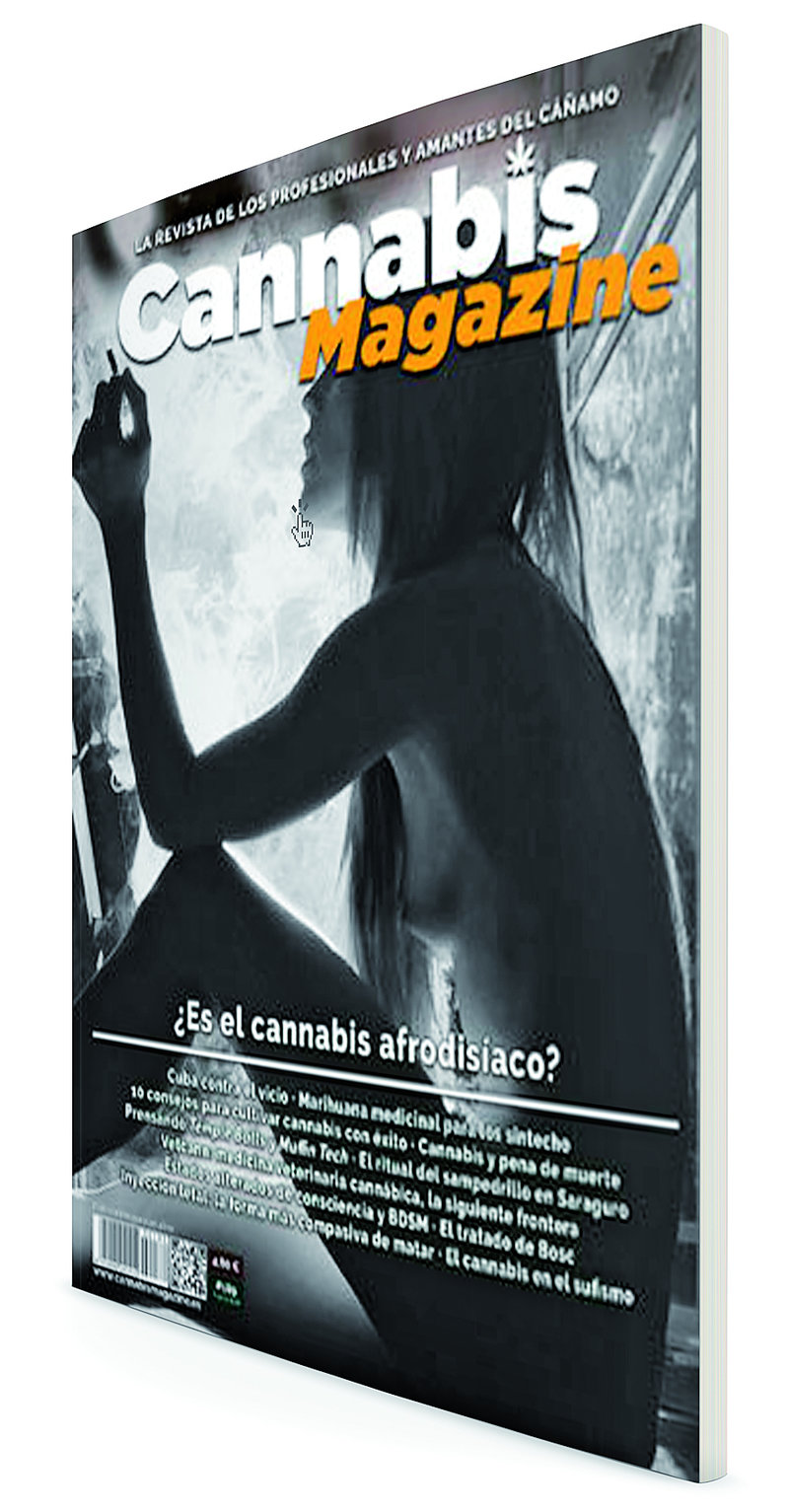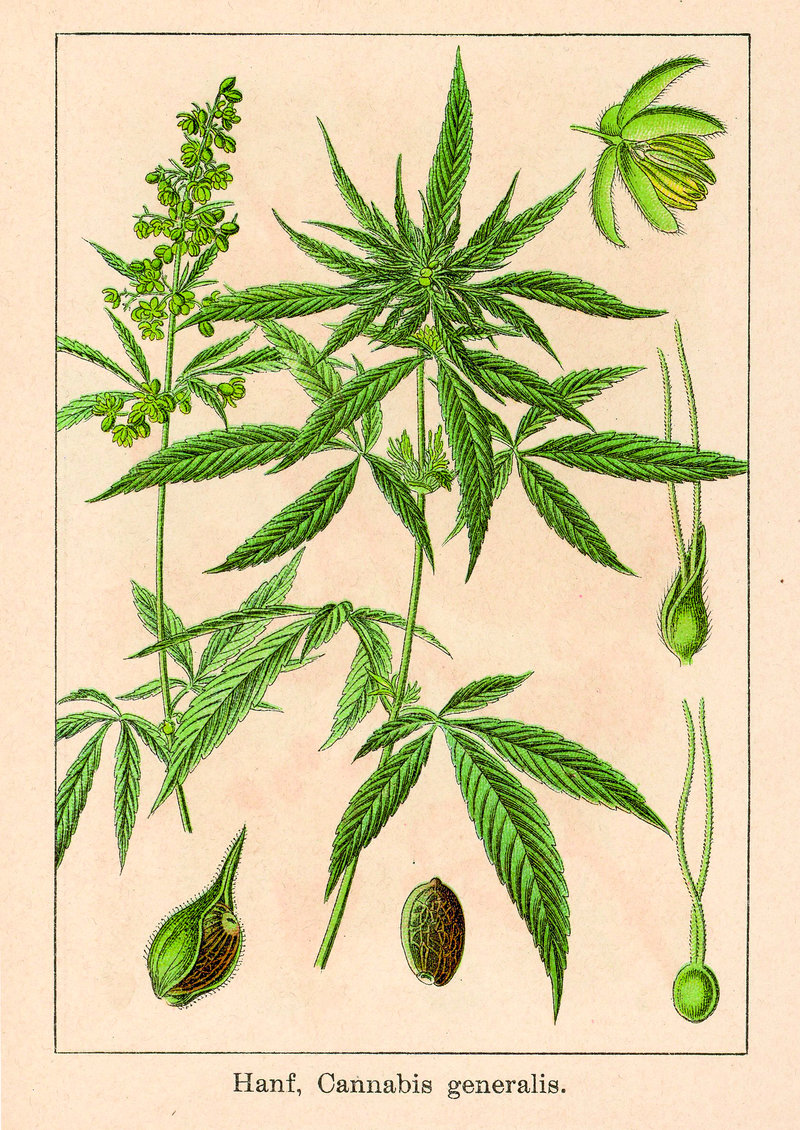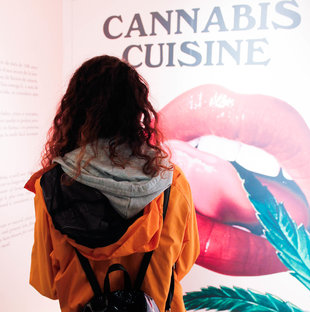A gold mine?
Cannabis is more than just a recreational drug, it is also a focus of medical research and a prospect for investors
Sativex is the brand name for the drug made from cannabis that is prescribed in Spain. It is used in patients with multiple sclerosis to help symptoms related to muscle stiffness. Sativex is documented by the Spanish Agency for Medicines and Health Products, where legal references authorising the cultivation of cannabis plants date back to the sixties. Given that fact, perhaps it is time to review what marijuana is today. To do so, first we need to banish the typical image of the stoner from our minds, as cannabis is increasingly used as a medical tool to fight inflammation, pain, anxiety, and insomnia.
While the police are dismantling ever more marijuana plantations, in Barcelona you can visit the Marijuana Museum, the Hash Marijuana & Hemp Museum, or watch Marijuana TV. Every year, Catalonia hosts Spannabis, the largest cannabis fair in the world, and a simple internet search will reveal a number of clinics that use cannabis in therapy in Barcelona alone.
Marijuana, and its cousin hemp, come from the cannabis plant. Marijuana differs from hemp in that it has a strong psychoactive component — cannabinoid — which is what gets users high, and is known as THC – tetrahydrocannabinol. We can distinguish between cannabis for industrial and food use, in the form of hemp, which has no or very little THC, and cannabis for medicinal and recreational use, which does contain THC.
Hemp has historically been used to make all kinds of materials, from ropes to clothes to paper, and today can be used for biodegradable plastics, cosmetics and building materials, as well as biofuel. Hemp thus has great potential in the efforts to make us less dependent on fossil fuels. As for marijuana, it has two key components: the THC mentioned above and CBD – cannabidiol. CBD has huge therapeutic possibilities but no psychoactive effects.
While cannabis still needs much research, its medicinal capabilities are varied. When used for medical purposes, it is not usually smoked but rather vaporised, eaten, infused or used in the form of oil. Chronic pain, epilepsy, multiple sclerosis, control of nausea and vomiting are just some of the complaints it is used to alleviate.
Neither hemp nor marijuana can be grown freely in the EU, as the latter is considered a narcotic and is illegal in most places, although each country has its own regulations. Spanish law forbids the cultivation, production, trafficking and illegal possession of marijuana, but not growing it for personal use and we can legally possess up to 100 grammes of weed. At the same time, CBD has become very popular and there are increasingly more CBD products. As such products can only contain a maximum of 0.2% THC, it is legal in Spain, although not for human consumption.
A legal tightrope
The situation of marijuana in Spain is somewhat confusing and so consumers walk a legal tightrope. People can grow plants for self-consumption and there are grow shops – physical and online – that sell everything needed to do so. These shops cannot sell marijuana, but they sell feminised seeds, which are not psychoactive but which produce the female plants that produce the buds from which marijuana comes.
There are also cannabis clubs, which are private entities that make it easier for their members to consume cannabis both therapeutically and for recreation. To join, you must be of legal age and endorsed by a member. Production and distribution are only allowed among members. In Catalonia, these clubs have grown greatly in recent years, and the basic idea of them is to bypass the black market, while they also offer recreational activities, as well as advice, talks, and even yoga. FAC, the Federation of Cannabis Associations, was founded in 2003, and ConFac, the confederation of state federations was set up in 2017. ConFac’s 2019 report says that the National Police confiscated around one million cannabis plants, half a million kilos of cannabis resin, and about 38,000 kilos of cannabis in herb format in 2018. Nearly 400,000 people were charged.
According to the Global Hemp Guide, Catalonia has 210 cannabis associations or clubs and about 200 of them are in Barcelona province. Club representatives are not eager to talk and prefer to avoid the spotlight. “Often,” says one representative, “appearing in the media means that the police increase the pressure on us.” That does not mean the people consulted exist outside the law, but some clubs are far more demanding than others when it comes to admitting new members.
Meanwhile, the chief inspector of the central organised crime area of the Mossos d’Esquadra police – who must remain anonymous – says that the police have been finding unlawful marijuana plantations for some years now. In fact, the inspector says that among international bodies, Spain has a certain fame: “Spain is Europe’s greenhouse. It’s a producing country, and Catalonia in particular, which can be seen from the number of plantations and the amount of marijuana that is seized around Europe that originated here.”
One argument in favour of legalisation is economic. On January 1, in the US state of Illinois, marijuana began to be sold legally for recreational use. Over 3.2 million dollars were made in sales on the first day. Colorado began the legal sale of cannabis in early 2014, the first state to do so. And what has been the effect in states where marijuana has been legalised? The cannabis associations say the black market has come to an end, and the crime that goes with it, while quality has been regulated and the local economy has benefited. It is estimated that if the whole of the US were to legalise marijuana, 100 billion euros of public funds could be raised by 2025. That is a potential gold mine.
feature
“Ignorance, fear and stigma”
Professor and specialist in neuropsychology, Noemí Sánchez-Nàcher is the head of the European Cannabis Consumption and Cultivation Observatory. She points to “fear and stigma” when it comes to how marijuana use is seen by the general public. “The main problem with cannabis is ignorance, thinking that by consuming it you have become a drug addict,” she adds.
Meanwhile, a representative of a Catalan cannabis association says the idea that marijuana is a gateway drug is wrong and “has never been proven”. With regard to addiction, he believes that it is not the plant that is to blame, but “the use that the person makes of it”. Given the preconceptions about marijuana, it is not easy to obtain permits to research its effects.










